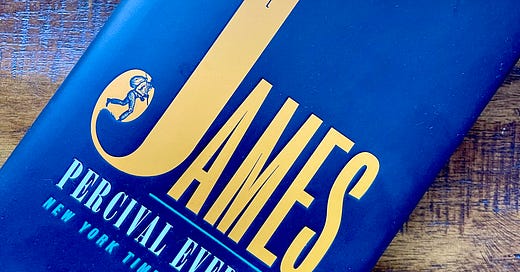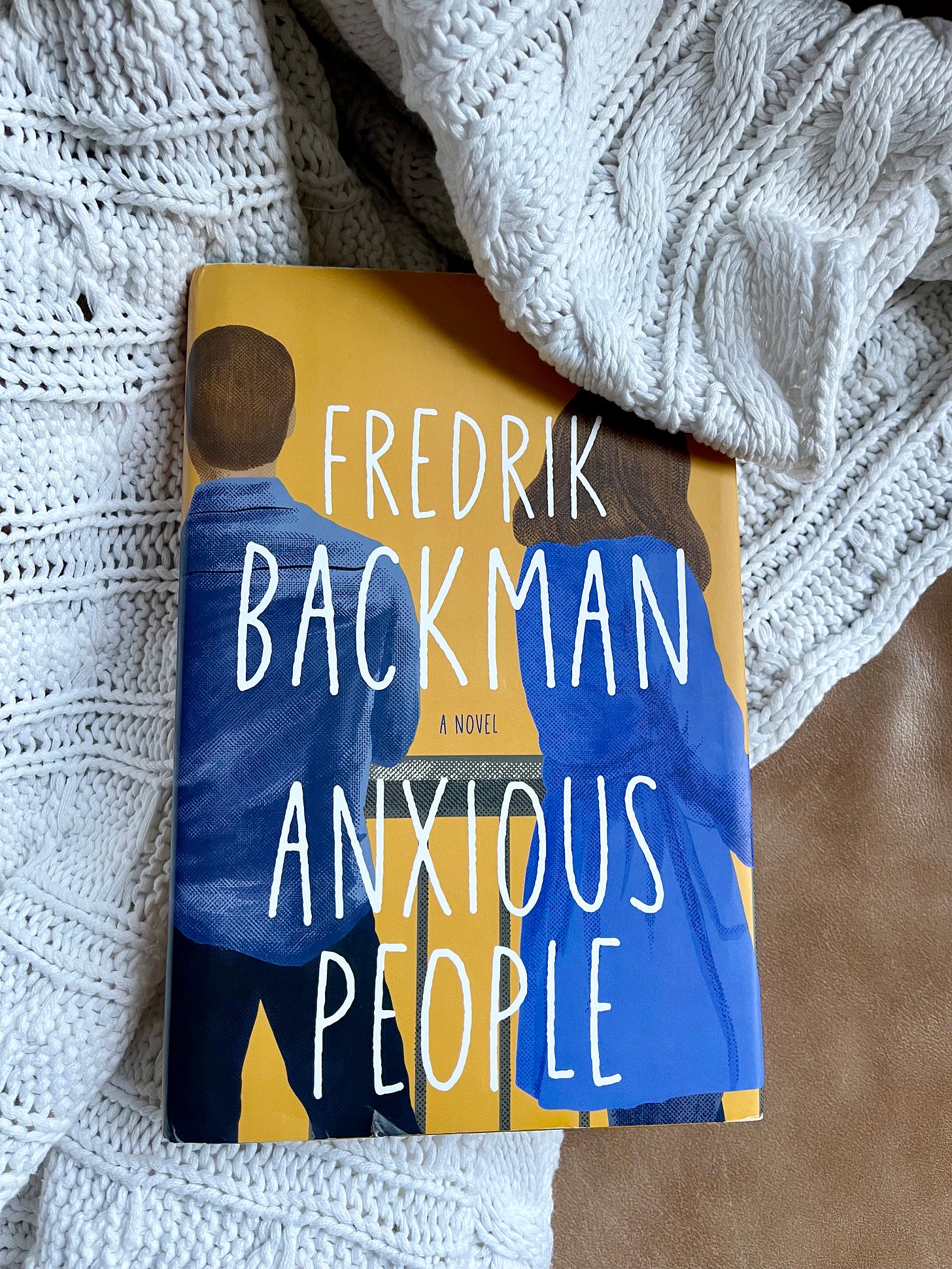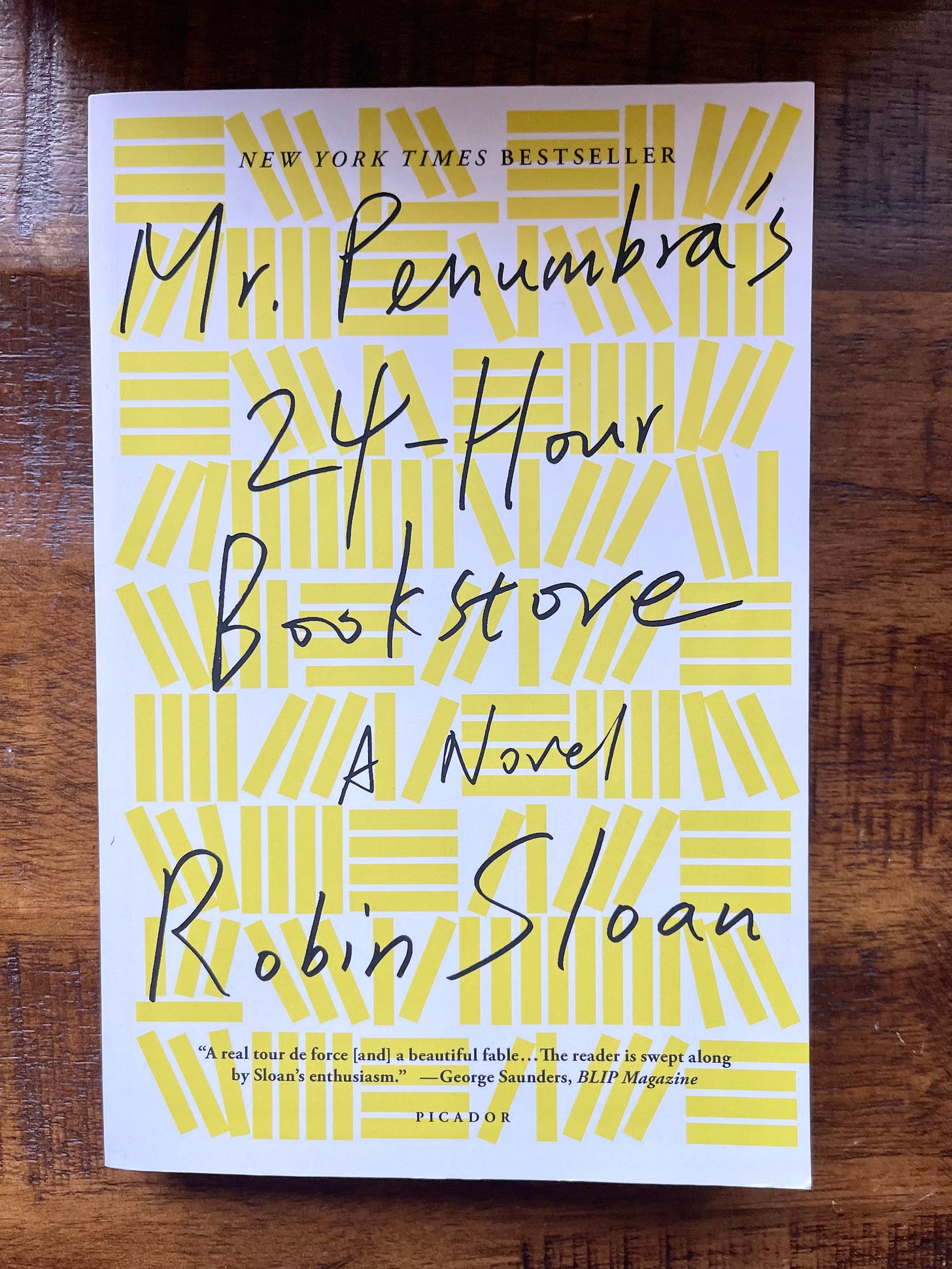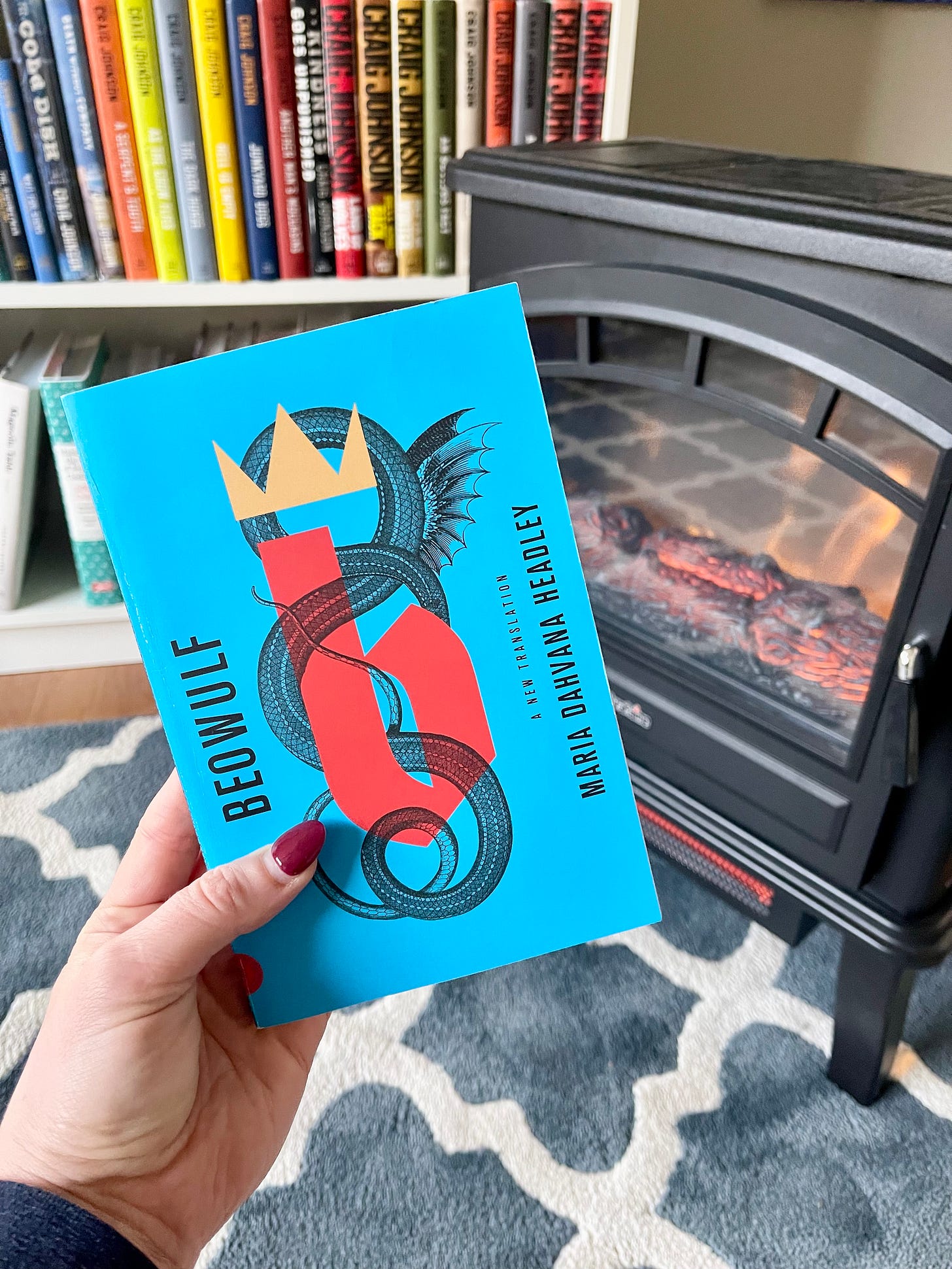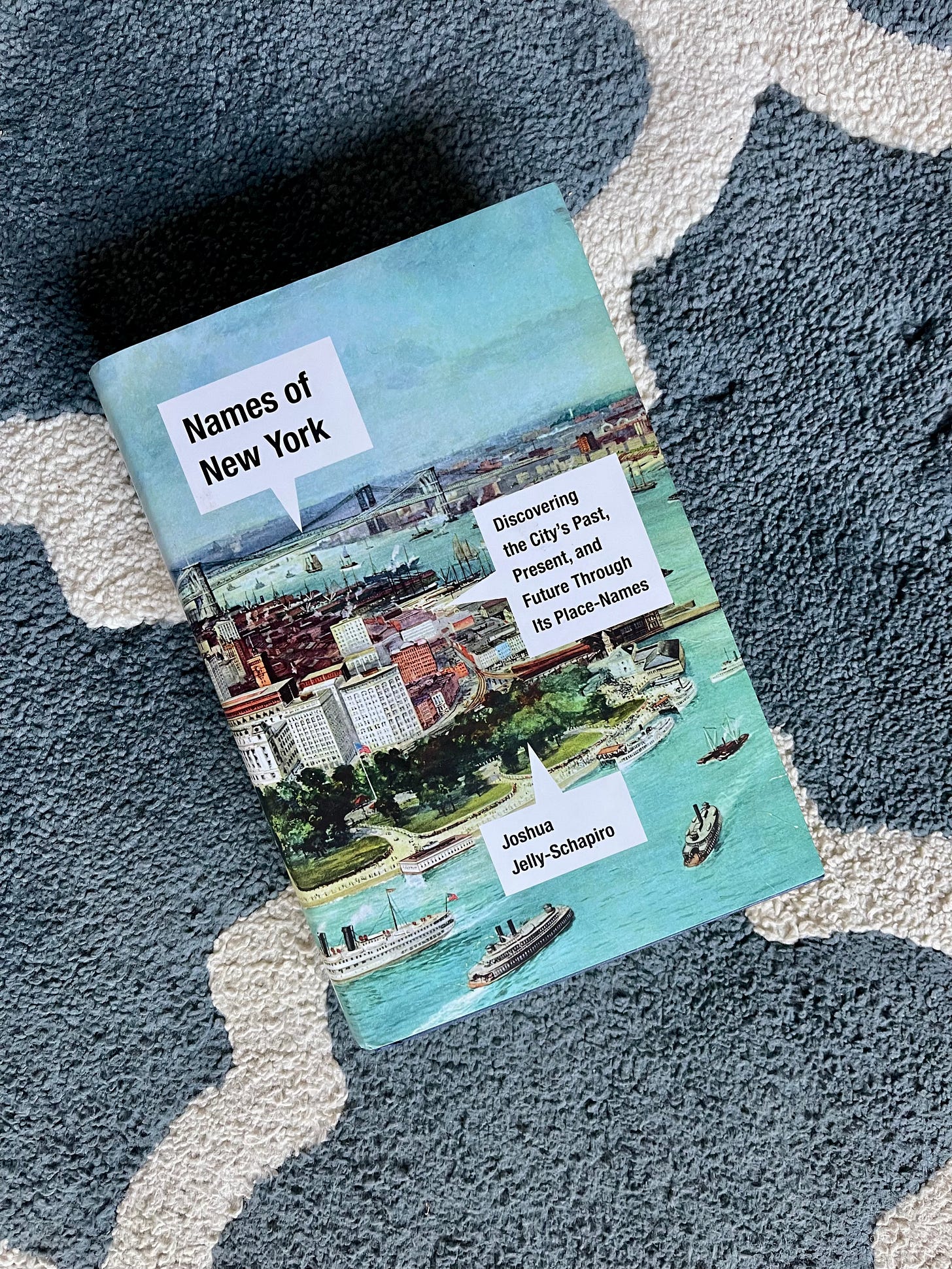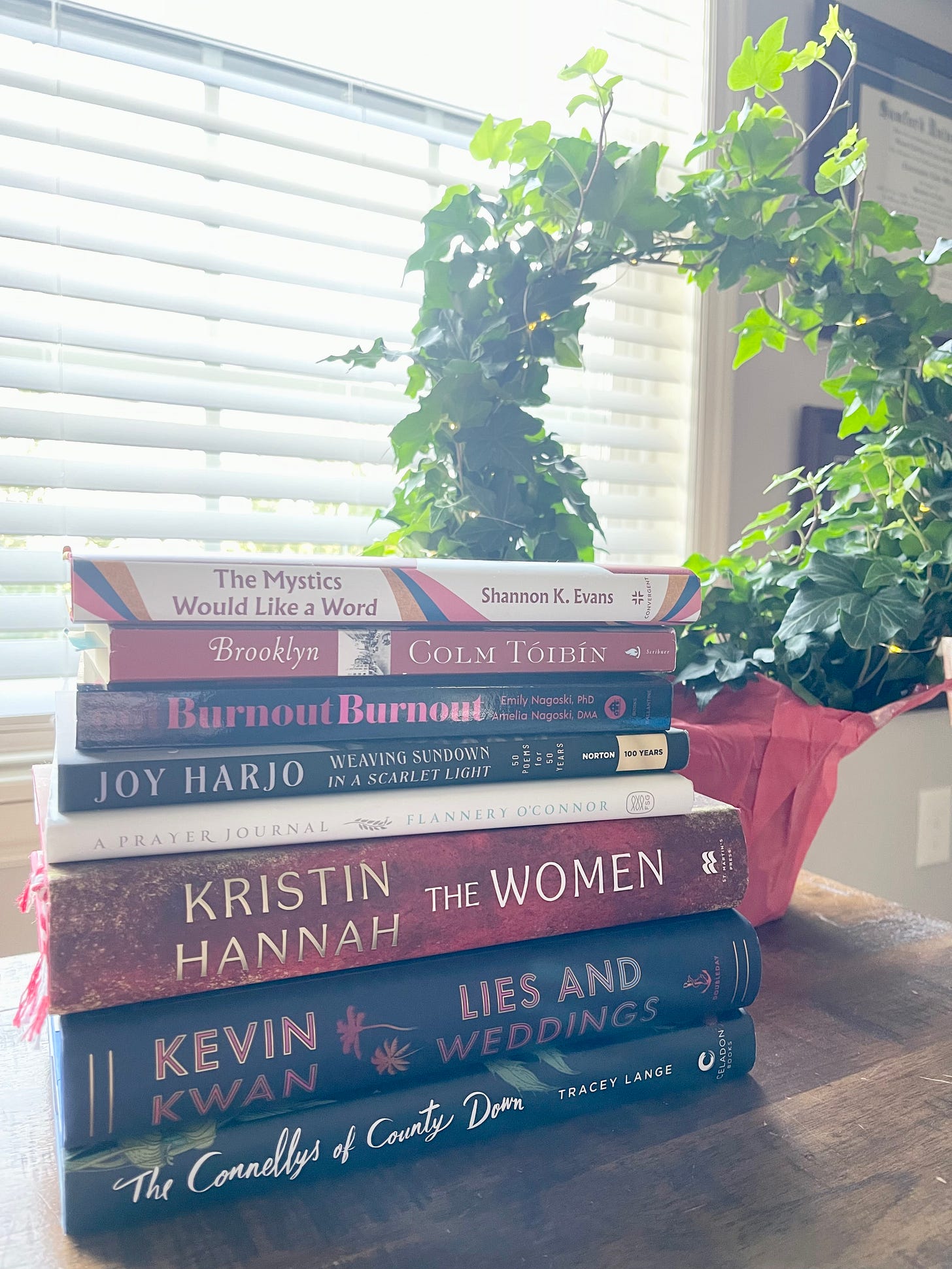What I read: November edition 🦃
Backman does his thing again, an excellent book club pick, a new translation that breathes life into something ancient, and more...
November was a busy month; I had two separate work trips and tons of critical deadlines, school events for my daughter, the Thanksgiving holiday, and Life-Just-Lifing.
But I was able to hold tight to my nightly reading ritual which served me well amidst a busy month. I often get asked this question: how do I read so many books in a year? I work full-time, am a momma, and have an engaged life with our community. The answer is two-fold:
Discipline - I make time to read each night. No matter how tired I am, picking up a book to even read 5 pages calms me and puts my mind in the right place for sleep. And my phone lives plugged in downstairs in our kitchen every night.
Books in every room - I have a book or two in every room. So if I’m in the kitchen making dinner and have just thrown something in the oven, I pick up a book to read a few pages instead of my phone. If I’m watching a football game, I pick up a book at half-time instead of my phone. You get the picture.

This is not to shame anyone, these are practices I’ve spent the better part of a year developing. Discipline takes practice. And the throughline is: I’m trying to use my phone less and pick up books more.
So, what books have I been filling my screen-free time with this month?
A new Fredrik Backman fave. 🫶🏻
A sweeping tale that just didn’t grab me. 👎🏻
A new translation of an ancient text that always fell flat and misogynistic for me…until Maria Dahvana Headley came along. 🥳
An excellent book club pick. 📚
An NYC history of place and names. 🌆
Anxious People by Fredrik Backman
One of my favorites does it again. If I tried to explain the plot to you, it never does his work justice. It may be hard to understand why I adored a book about a hostage situation at an apartment open house.
But as usual, Backman takes the strangest events and holds a magnifying lens up to each one of these people, all of whom are strangers in the room, and shows the humanness behind each person. And it’s a process of characters with seemingly little in common growing from strangers to friends. Not without complication and with layers of complexity, but this is the central thesis of most of his books:
It is always better to seek to know one another than to think we understand each other.
And as a reader, you find yourself empathizing with everyone by the end—because it’s never as simple as the one thing we think we know about each other. This book was a beautiful reminder because isn’t a large dose of empathy what we all need right now?
This book was about a failed bank robbery and an open house hostage drama, but it truly drilled into what it means to be a person in the world today. With Backman’s signature wit and poignant nature, this book was un-put-down-able.
If you have never read any Backman, may I offer this as a first foray into the wonderfully human worlds he creates? 🥰
Mr. Penumbra’s 24-Hour Bookstore by Robin Sloan
I wanted so much to love this one. The title alone: the use of my favorite astronomy term which is also used in historical Supreme Court jurisprudence (penumbra). I’ll stop nerding out over here and summarize, it had a strong title and premise, but that is where its accolades end.
Started with an interesting mystery: Clay, a former web designer, finds himself without a job in an industry that isn’t hiring. Desperate, he finds a job as a night shift clerk at a bookstore that is open 24/7, one that seems normal with a few patrons here and there during normal business hours. But in the nighttime this is when things get interesting. People come harried into the store in the middle of the night searching for the next volume with great urgency. These volumes are on high shelves with enormous ladders in a back room that Clay learns to scale with dexterity.
Clay is thrown into a mysterious, 500-year-old secret society, and the questions keep coming: who are these scholars? What is their goal? And should Clay help them? Clay sees a path forward in using his programming background to solve some of the larger more complex issues these texts are asking.
The premise of this book was fascinating: Sloan attempts to thread the needle between the world of ancient texts and new technology’s ability to aid in access to those texts. Attempts are the keyword here. This story began to quickly get bogged down in intricacies of character development that wasn’t actually helping me get to know Clay, Mr. Penumbra, or anyone else. And they were huge distractions to the plot, causing huge discrepancies in pacing. All in all, great idea, but not well executed. 😕
Beowulf: A New Translation by Maria Dahvana Headley
Y’all…hear me out on this one. Before your eyes glaze over looking at the title of this, take a deep breath. Think back to Brit Lit in high school, when you were memorizing the Prologue to Canterbury Tales in Middle English. Just before that exercise in impressive cocktail party tricks, you probably read something in even older English—Old English—to be exact. 😉 You read a translation that felt as dead as the language it was written in. 💤
But you may recall the big shapes of that story of Scandinavian mead halls, the monster Grendel, and his mother. And you probably remember slogging through that ancient text and needing SparkNotes like never before.
And then, if you were an English major like me, you were exposed to it again in your Brit Lit survey course. And if you were like me, you saw Grendel and his mom as a grind and wrote down just enough to get through the midterm and forgot the rest.
Now, I’ve sufficiently described the Beowulf *most of us* know. THIS IS NOT THAT BEOWULF. 🛑
Maria Dahvana Headley has done something truly remarkable. She has taken a work chock full of toxic masculinity and incomprehensible hubris and adapted it into something so approachable, so funny, and so feminist.
I think Headley says it best in her epic introduction (which in and of itself should be added to literary canon for all students diving into this text),
“Despite its reputation to generations of unwilling students, forced as freshmen into arduous translations, Beowulf is a living text in a dead language, the kind of thing meant to be shouted over a crowd of drunk celebrants…Beowulf is not a quiet poem. It’s a dazzling, furious, funny, vicious, desperate, hungry, beautiful, mutinous, maudlin, supernatural, rapturous shout.”
Headley pays special attention to Grendel’s mother, who is portrayed as a wounded mother, rather than Angelina Jolie’s absurd succubus-style villainess. She also highlights other women throughout who get not much more than a passing word in most classrooms, and their identities are made clear and unique. 🙌🏻 Specifically, Hrothgar’s queen, Wealhtheow, receives much more than cupbearer to her identity. Her own desires for her kingdom, her hospitality, and her generosity all showcase her leadership in a kingdom that sees her solely in reference to her husband.
But even more interesting is just the translation itself. It is lyrical, poetic, and totally modern. Here are a couple of quotes from the poem to give you some flavor:
“Grendel was the name of this woe-walker / Unlucky, fu**ed by Fate.”
“No matter your other battles, / the tales you told, the lines you sold, / buddy, at least you lived. This time? / Bro, know it: no one’s ever lasted / a night clasped in Grendel’s arms.”
“A Helming-hostess, treading with purpose, rings shining / beer-sounding soldiers, old and young, both of her own / house / and the sea-slayers’, goblet held to her breast. Hashtag: blessed.”
If you didn’t laugh aloud reading these…well, I don’t know how to help you. 😂
This adaptation is such fun, breathing life into a text long-maligned by English majors everywhere. I was talking to a friend of mine who wrote her doctoral thesis on Beowulf, and she’s got an interesting take on it, that it’s less of a translation and more of an adaptation. I can get on board with that, and I’m excited to share a couple of her recommendations for further reading in future posts!
All in all, this is so very worth picking up.
James by Percival Everett
This is our December book club pick, and I cannot wait to talk about it! This is a retelling of The Adventures of Huckleberry Finn, told from the perspective of Jim, the runaway enslaved man who Huck ends up on his adventure along the Mississippi with. Just as Twain used his signature sardonic wit and satirical sense of humor, Everett applies the same formula to James.
If you are familiar with the basic plot line of Huck Finn (recall the American Lit survey course in high school), you won’t be surprised by the storyline, but it is in the telling that this book truly shines.
The satire is thick, as those who are enslaved speak in the dialect Twain wrote when speaking to white folks. But, when they are together amongst other Black folks, they speak with better English than Huck Finn himself. They secretly teach their children the nature of this code-switching, ensuring they are well-red in philosophical canon among other things, and it is just incredibly on point.
For instance, James—as he is known to fellow enslaved persons—has several philosophical debates with John Locke in his mind. All the while, white folks are talking about how stupid slaves are, and we know something quite different about James and his fellows. This is satire at some of its best, used as a vehicle for commentary. The novel takes some fascinating twists and turns like the Mississippi River it is set upon, but at its heart, it says so much about the stories we tell ourselves about others versus what is true.
Y’all this is pure literary gold. If I were still teaching, I’d be adding this to my syllabus immediately. For those who loved Huck Finn and for those who struggled with it alike, this is just an all-around excellent read! 🌟🌟🌟🌟🌟
Names of New York: Discovering the City’s Past, Present, and Future Through Its Place-Names by Joshua Jelly-Shapiro
Since I went to NYC for the first time last month, I’ve been interested in learning and reading more about these iconic places and the stories behind and before them. And my love for place-making aligned so much with the title of this book, I just had to pick it up!
It was, in all honesty, a bit more dense than I thought it would be. But Jelly-Shapiro is a geography academic, so I was not deeply surprised. Despite this, all of you who love this city, American history, and place-making should add it to your reading list.
“Names are shorthand, they’re synecdoche. They are acknowledgments or shapers of history, containers for memory or for hope. And if names matter so much when attached to people, they matter even more when attached to places, as labels that last longer, in our minds and on our maps, than any single human life.
Such words thus do much more than merely label location. About how these words—in their rhythm and sounds and how they look rendered into Roman letters or affixed to street signs and maps—shape our sense of place.”
-Joshua Jelly-Shapiro
I absolutely loved this approach to place, indelibly linked to history and persons, but also reaching into what will be. There is a Western Apache teaching that “wisdom sits in places,” and this book definitely unpacked New York City with this in mind.
From Broadway’s translation from an Indigenous trail whose width impressed colonizers to a noun synonymous with iconic musical theater the world over to Manhattan’s own birth from a Native tongue, this book interrogates the histories we know and those we hear less about. Jelly-Shapiro speaks to the implicit challenge in understanding Indigenous meanings of place names, because just as many family names were butchered at Ellis Island, much of what we know today about Indigenous names come from journals of explorer crews of the like of Henry Hudson’s or Dutch & British colonial settlers, who inevitably recorded both spelling and pronunciation incorrectly. It is deeply sad to think of that lost history and story.
One of the most magical pieces of this book to me was viewing Washington Irving’s Sleepy Hollow as instilling a national memory of the nation’s Dutch past. The Van Tassels and Van Garretts, Reverend Steenwyck, and other family names are enshrined in our collective memory (and at least my annual viewing of the Tim Burton classic).
Another homage I appreciated, was the look into Hamilton (through and beyond Lin-Manuel Miranda’s epic) to how this particular immigrant founding father has been hallowed in his hometown of NYC from its beginning. Within this same story is that of the Marquis de Lafayette, America’s favorite fighting Frenchman, whose name is now attached to 72 cities across the nation (e.g., Fayetteville, North Carolina).
An American efficiency that began in NYC itself was the putting off of the Old-World way of street names changing with each city block. New Yorkers, Jelly-Shapiro notes, “began conceiving of their streets, whether they ran a few blocks or a few miles, as more like rivers than places.”
He also speaks about the theory of spatial fix, which is the aim of capital to create more and better ways. At one time in the City’s history, more and better factories and warehouses were the economic drivers, while today’s are luxury condos. Jelly-Shapiro notes that part of the importance of ensuring these economic drivers make it back to utilization for public good, and not just for investment and moneymaking.
Rather, these investments are to be “expended—in a functioning democracy wherein private excess is collected as tax—on public goods, such as schools that train workers but also mold better citizens; roads that ease supply chains but also help people visit their grandmothers; parks that raise nearby real estate prices but also make the city more pleasant for everyone.”
(Thanks for allowing me that Leslie Knope, rah-rah 🎉 local government moment, but these are the things that inspire this MPA 🙋🏻♀️)
I highly recommend it to those who fell for the Big Apple just as I did.
Thank you for joining me here for another month, dear readers! Here’s a preview of what is on my TBR pile for December:
(I’ve already started Brooklyn, The Women, and The Connellys of County Down. So far, so wonderful.)


